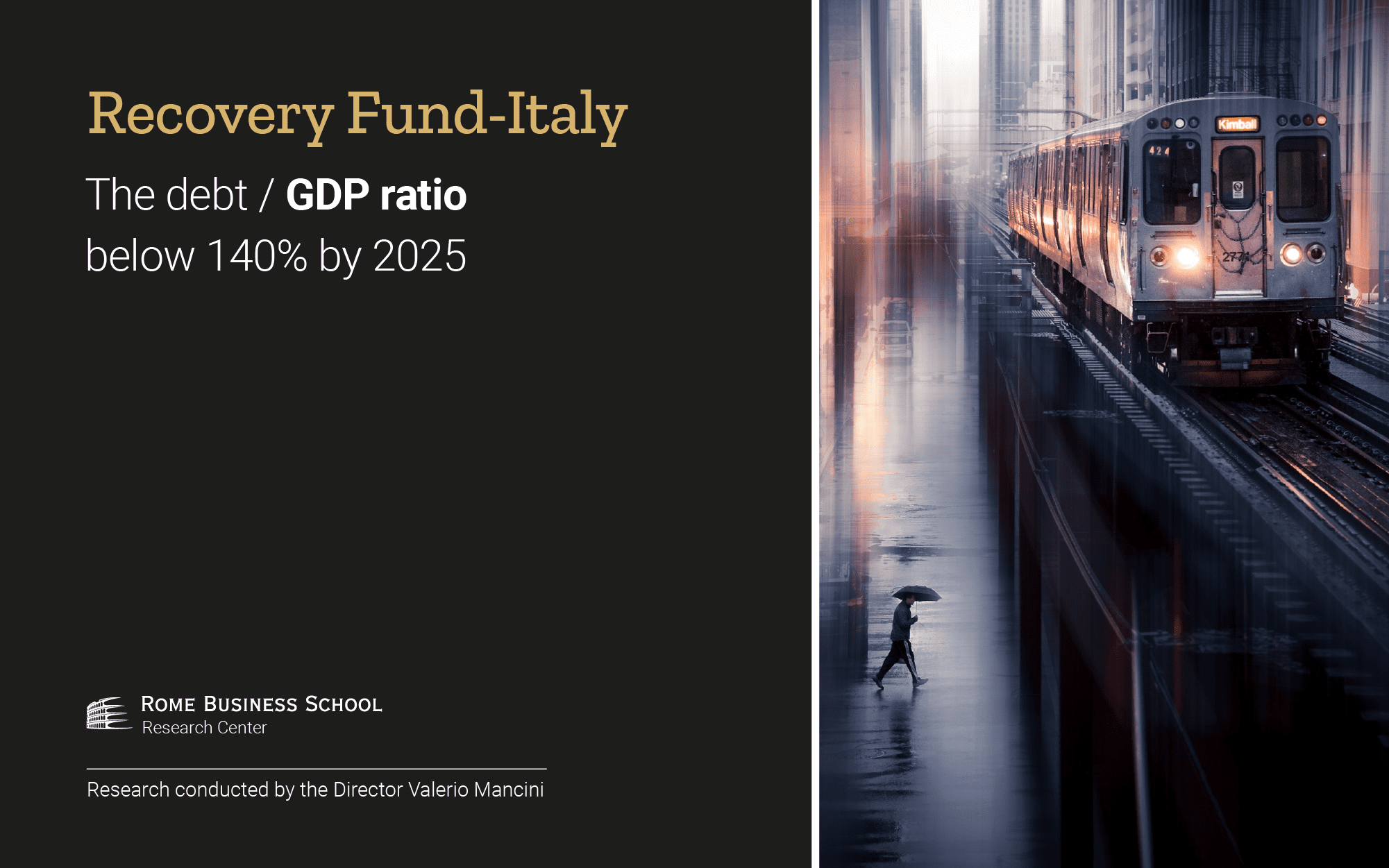Recovery Fund-Italy: the debt / GDP ratio below 140% by 2025

The latest Research Report published by Rome Business School shows how the Recovery Fund for Italy will produce growth only from 2023 with 8 decimal places of additional GDP after the 4 attributed to it in 2022. Meanwhile, the gap between the North and South of Italy is also growing in terms of public debt.
Monday 18 January 2020.- Rome Business School published the study: “Public debt. What scenarios for Italy after COVID-19? “, edited and redacted by Valerio Mancini, Director of the Rome Business School Research Center, who analyzes the current public debt situation, its distribution on a regional level and how it is affected from the almost total blockade of the national economy due to the health emergency from Covid-19. The research shows that the increase in public debt in 2020 amounted to over 3 billion euros, of which about one third in foreign hands.
“The Italian system as a whole report a debt / GDP of over 160% which creates an imbalance for the entire system due to the heavy taxation made necessary to support public spending and repay the interest on the debt” reports Valerio Mancini. However, Lombardy, Emilia-Romagna, Veneto, Tuscany, Marche and Piedmont have a GDP debt of around 80% which makes their economic system better than the German one.
On the other hand, the South of Italy has a GDP debt of 230% with peaks of over 300% (table 5). Therefore, we find the best performances in Lombardy (71.9%), while the worst data belongs to Calabria (305.3%).
In terms of public finance, the research highlights a deterioration of 151.3 billion in the primary balance compared to 2019 (from + 1.8% of GDP to -7.3%), which would generate a decisive fall in revenues (those tax rates stop 41.7 billion below last year’s levels, with a decline of 8%) and a surge in spending (95.1 billion more net of interest; + 11.7%) for shock absorbers social and other anti-crisis measures.
The research predicts as well, a recovery from 2023 when the Recovery Plan will take on the main share of the expansion entrusted to economic policy and by 2025 the debt / GDP ratio should fall below the 140% threshold. Possible future trends, in summary:
- Net debt jumped to 7.1% in 2020 and will rise to 10.4% with new interventions to support the economic sectors and households for an additional 55 billion in deficit that will be authorized by Parliament.
- In 2021, it should then halve to 5.7%.
- Public debt (in relation to GDP) exploded in 2020, and is likely to exceed 160% with the new measures being approved.
- The possible third wave of Covid can cost over 3 points of GDP and the recovery would therefore be postponed to 2022;
In Italy, the gap between North and South is destined to increase also in terms of public debt. Currently some regions of the Center-North have a debt / GDP of around 80% (in line with the most virtuous European countries). On the other hand, the South has an average debt / GDP of 230% with peaks of over 300% National interventions will cross the Recovery Fund, which however will take longer and is expected to play a leading role in growth only from 2023 (with 8 decimal places of additional GDP after the 4 attributed to it in 2022). Its actual departure, European negotiation unknowns permitting, is expected around mid-year, so the maneuver will have to anticipate some interventions: from the relaunch of Industry 4.0 to the new push for public and private investments.
Furthermore, in view of the short time required for the design of the Italian Recovery Plan, it will be necessary to create a dedicated structure, centered on a single command point.




